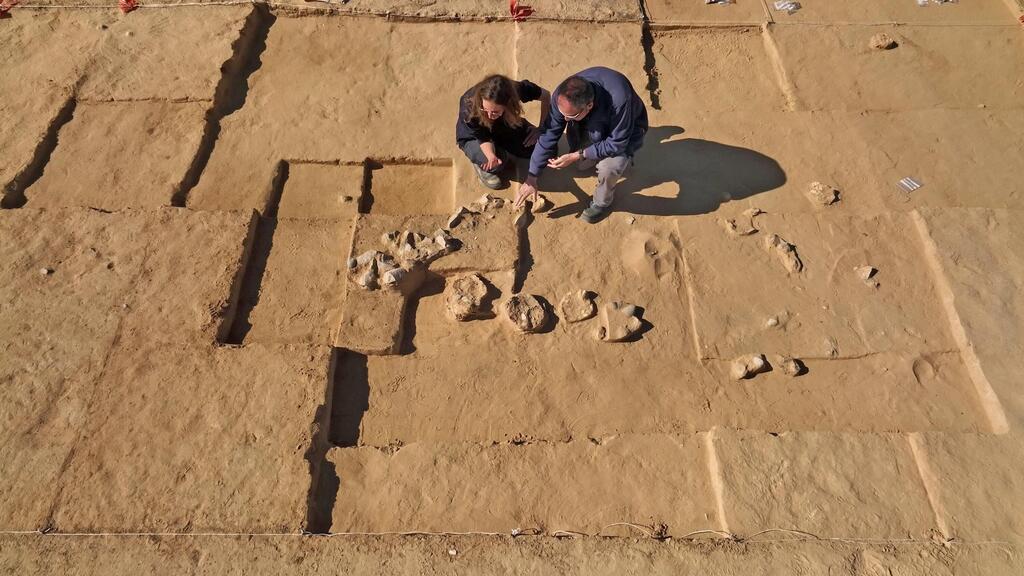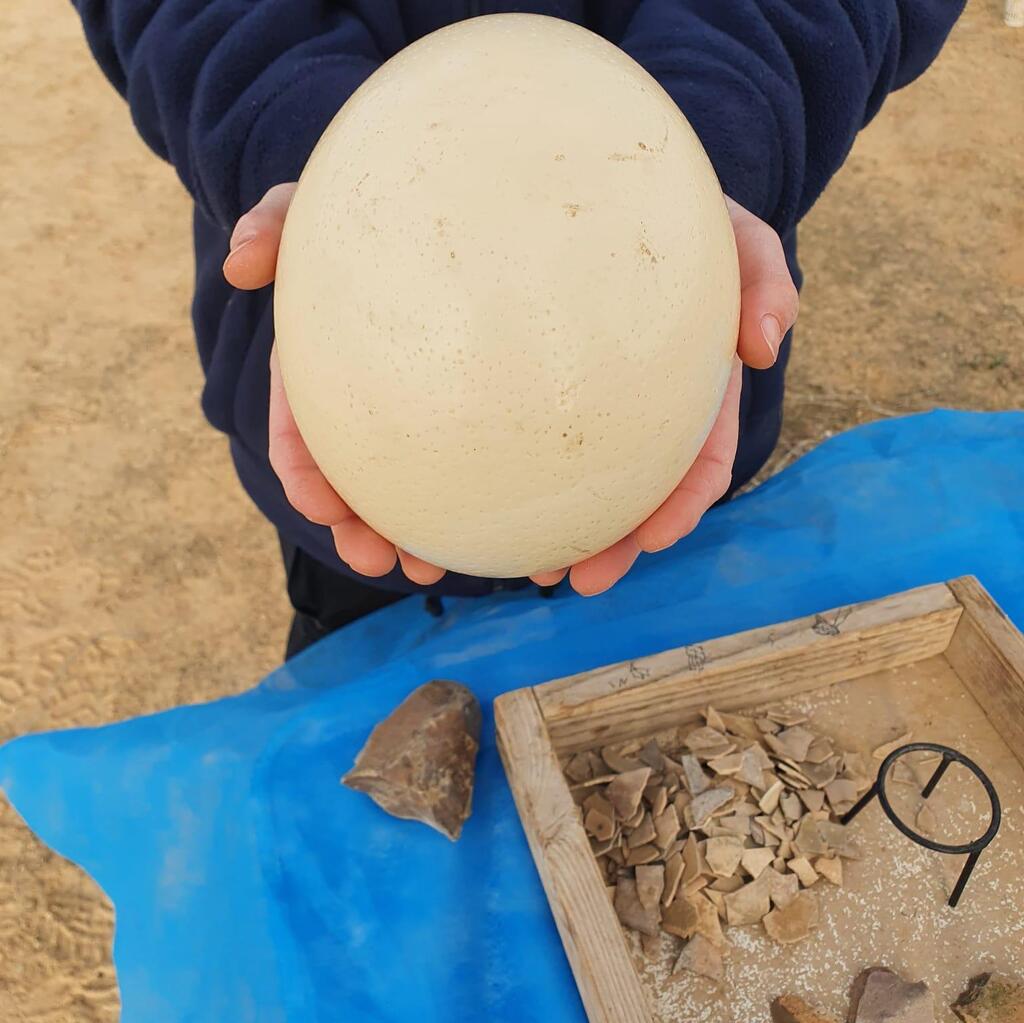Getting your Trinity Audio player ready...
Eight, over 4,000-millennia-old, ostrich eggs were uncovered near an ancient fire pit in the Nitzana sand dunes in the Negev desert in southern Israel.
This rare find, preliminarily dated between 4,000 and 7,500 years ago, was discovered in an Israel Antiquities Authority archaeological excavation in the agricultural fields of Be’er Milka.
The excavation was carried out by the Israel Antiquities Authority, initiated by the Jewish National Fund and the Ramat Negev Regional Council plans to prepare new agricultural land for Be’er Milka.
“We found a campsite, which extends over about 200 sq. m, that was used by the desert nomads since prehistoric times”, says Lauren Davis, the Israel Antiquities Authority excavation director. “At the site, we found burnt stones, flint and stone tools as well as pottery sherds, but the truly special find is this collection of ostrich eggs. Although the nomads did not build permanent structures at this site, the finds allow us to feel their presence in the desert. These campsites were quickly covered over by the dunes and were re-exposed with the sand movement over hundreds and thousands of years. This fact explains the exceptional preservation of the eggs, allowing us a glimpse into the lives of the nomads who roamed the desert in ancient times.”
4 View gallery


Lauren Davis, the Israel Antiquities Authority excavation director
(Photo: Emil Aljam, Israel Antiquities Authority)
Ostriches were common in the area from the early prehistoric periods until they became extinct in the wild in the course of the 19th century. Their eggs have been found in archaeological sites from several periods, reflecting the importance of ostrich eggs as a raw material.
“We find ostrich eggs in archaeological sites in funerary contexts, and as luxury items and water-canteens. Naturally, they were used as a source of food: one ostrich egg has the nutritional value of about 25 normal chicken eggs!” says Dr. Amir Gorzalczany from the Israel Antiquities Authority, who has researched the subject. “There is sometimes even evidence of decorating and incising on ostrich eggs, showing their use as decorative items. It is interesting, that whilst ostrich eggs are not uncommon in excavations, the bones of the large bird are not found. This may indicate that in the ancient world, people avoided tackling the ostrich and were content with collecting their eggs.”
“The proximity of the group of eggs to the fire pit indicates that this is not a natural chance find but the intentional collecting of the eggs,” says Davis. “One of the eggs was found directly in the fire pit, strengthening the understanding that they were used as food here. The ostrich eggs were crushed but well-preserved, despite the fact that they were uncovered in the surface layer.”
Davis adds that post-excavation scientific examination will add information regarding the exact age of the site. “After the excavation, we will reconstruct the eggs, just like a puzzle. The whole egg may tell us the species, and exactly what they were used for. As far as I’m concerned, every eggshell is worth its weight in gold! I am really looking forward to the research in the labs. The best is yet ahead!”
4 View gallery


The findings at the Nitzana sand dunes
(Photo: Emil Aljam, Israel Antiquities Authority)
Eli Escuzido, Director of the Israel Antiquities Authority, says: “The collection of ostrich eggs from Be’er Milka is a rare and fascinating find. It seems that the eggs survived as they were covered over by the sand dunes for so long, and due to the relatively dry climate of the area. The finds will go directly from the excavation to the new analytical laboratory in the Jay and Jeanie Schottenstein National Campus for the Archaeology of Israel, where they will undergo further observation and research.”



